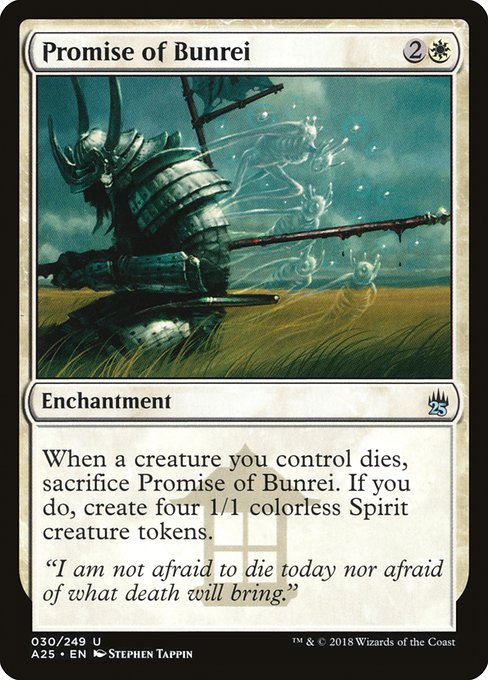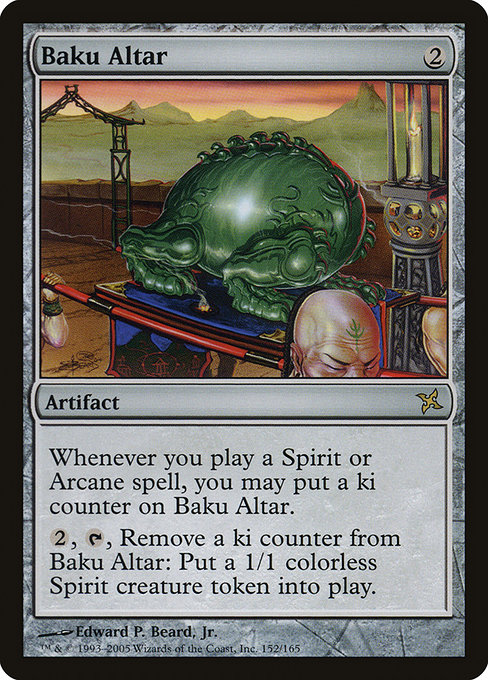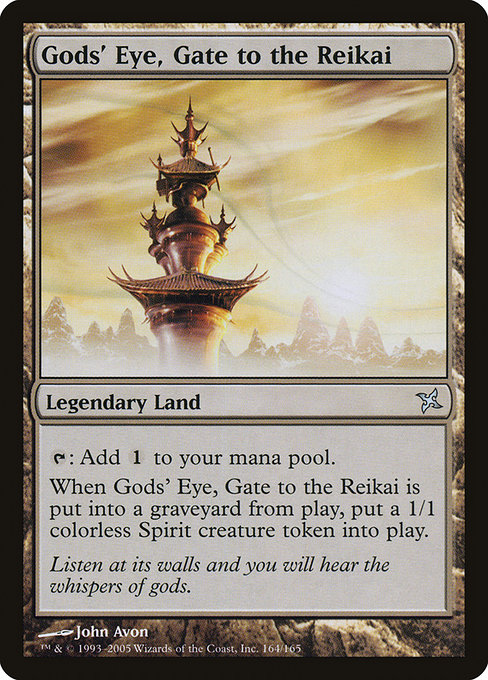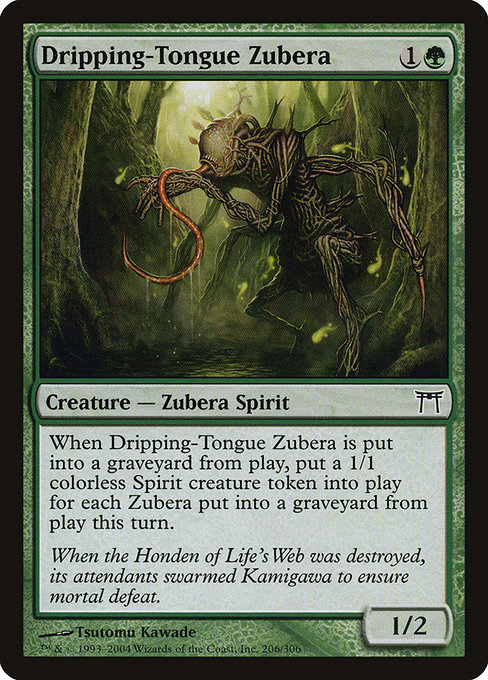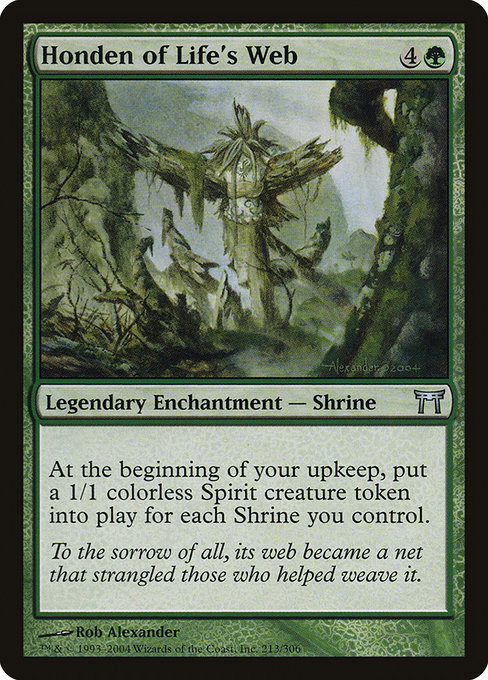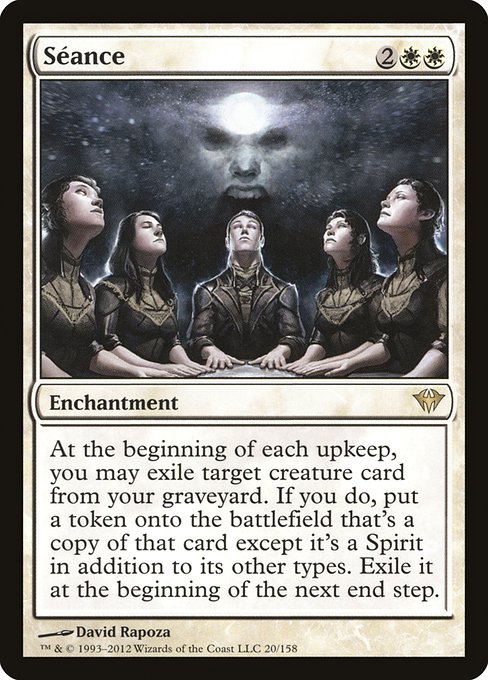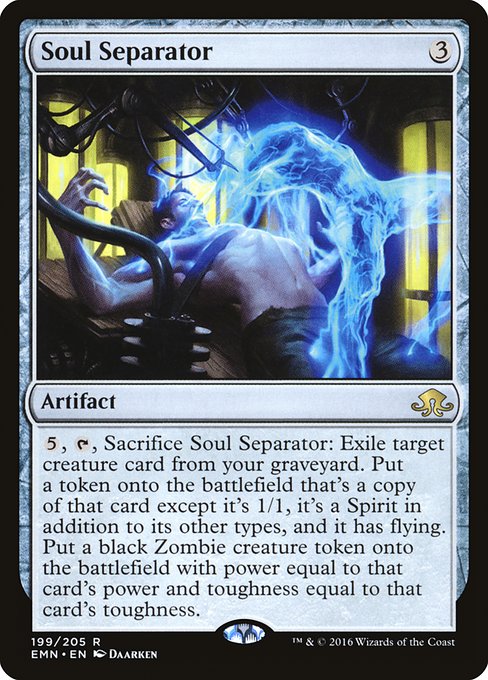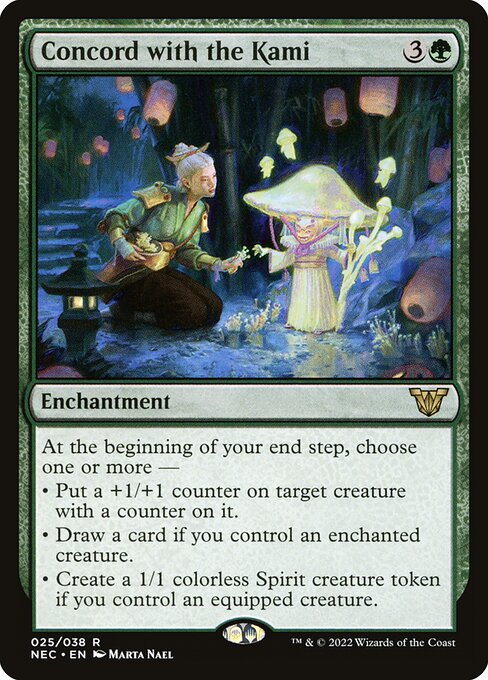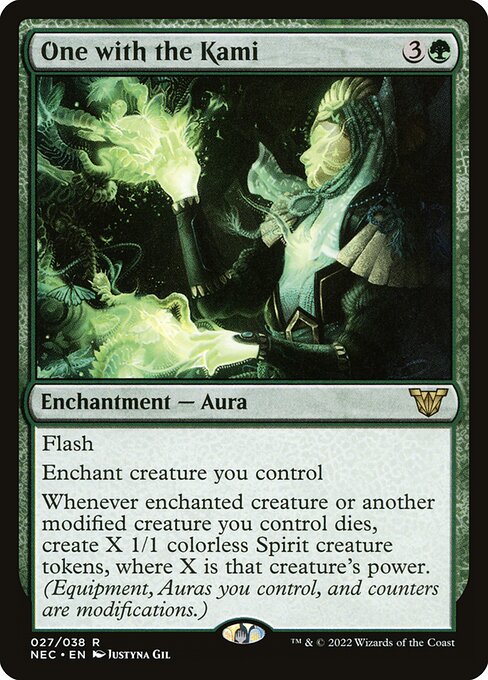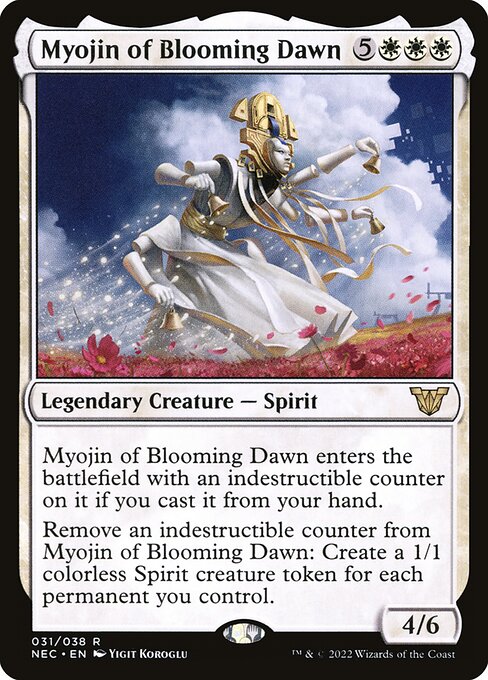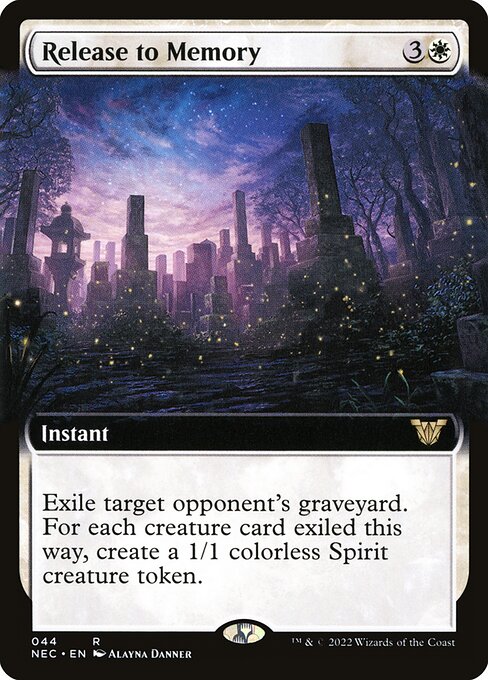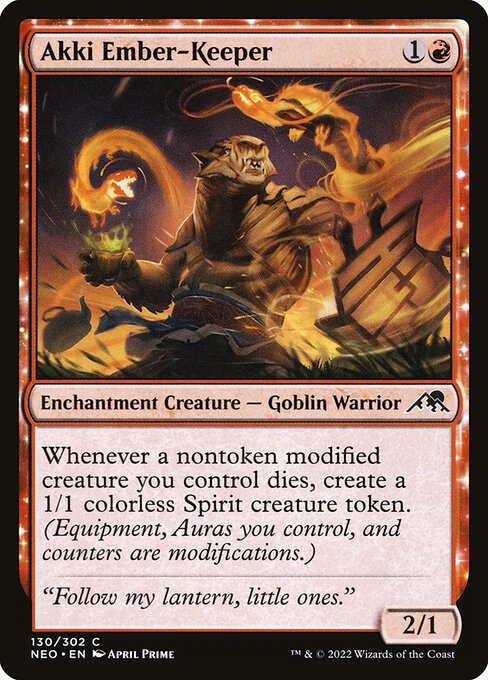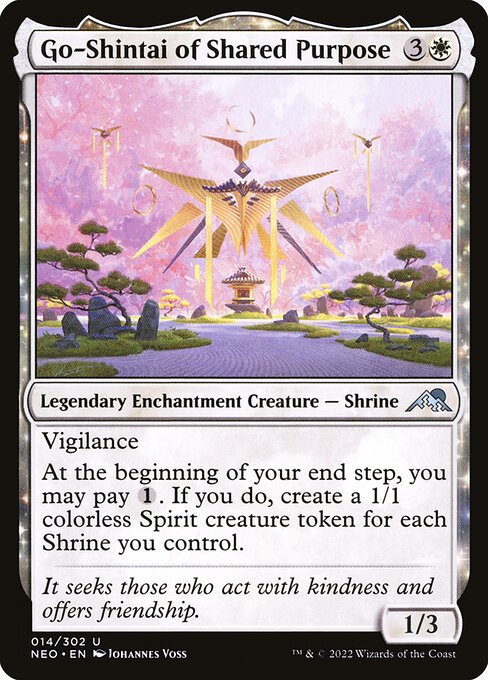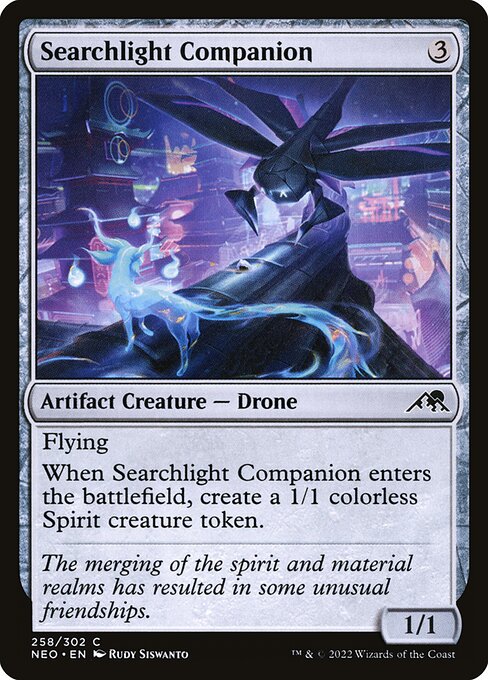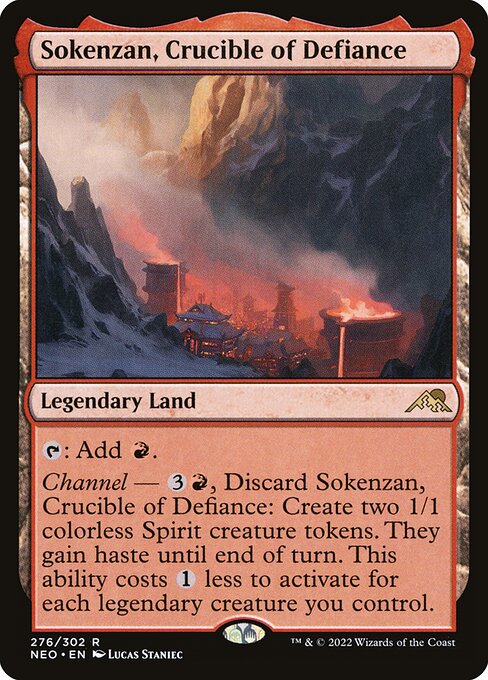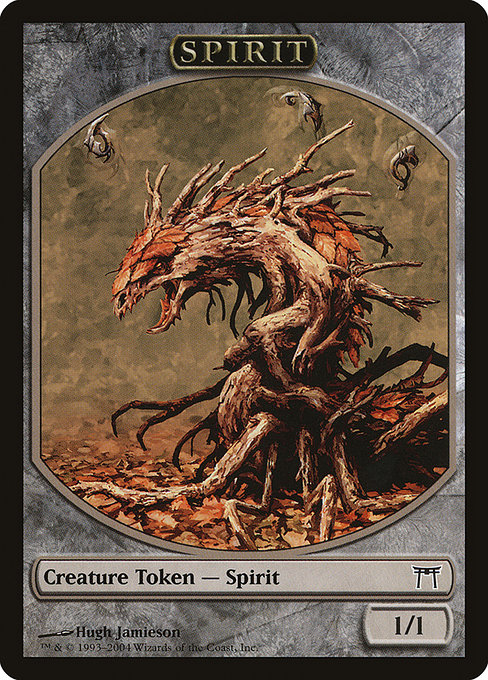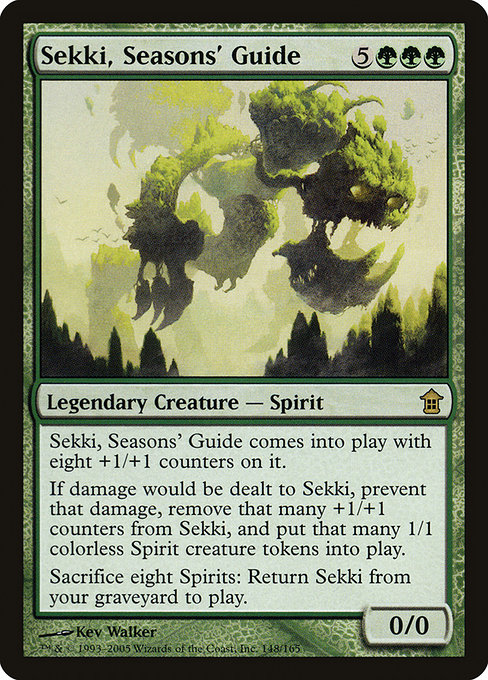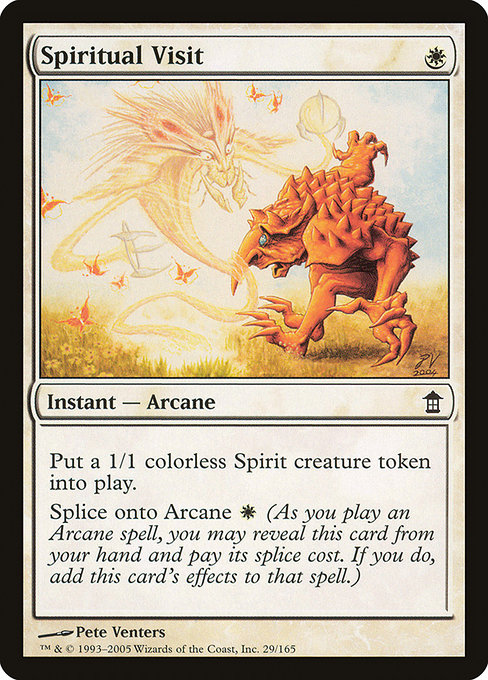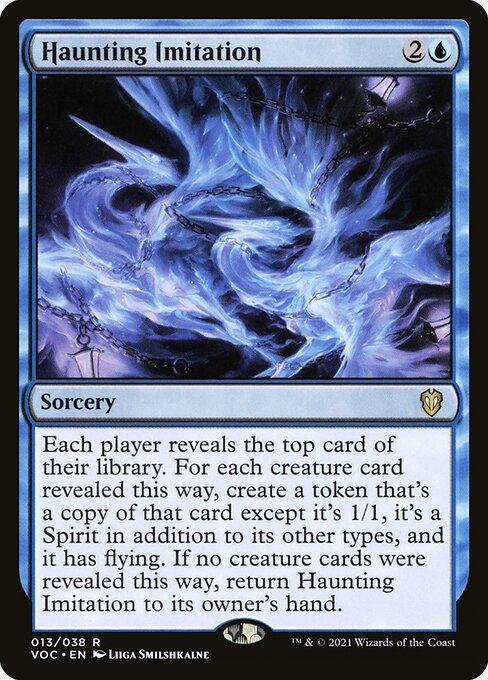永岩城の修繕 // 修繕する建築家
//
エンチャント — 英雄譚 // クリーチャー・エンチャント — 狐・モンク
(この英雄譚が出た際とあなたのドロー・ステップの後に、伝承カウンター1個を加える。)
I — あなたのライブラリーから基本平地・カード1枚を探し、公開し、あなたの手札に加える。その後、ライブラリーを切り直す。
II — あなたはカード1枚を捨ててもよい。そうしたとき、あなたの墓地にありマナ総量が2以下であるパーマネント・カード1枚を対象とする。それをタップ状態で戦場に戻す。
III — この英雄譚を追放する。その後、これを変身させた状態であなたのコントロール下で戦場に戻す。 // 警戒
修繕する建築家が攻撃するかブロックするたび、無色の1/1のスピリット・クリーチャー・トークン1体を生成する。
I — あなたのライブラリーから基本平地・カード1枚を探し、公開し、あなたの手札に加える。その後、ライブラリーを切り直す。
II — あなたはカード1枚を捨ててもよい。そうしたとき、あなたの墓地にありマナ総量が2以下であるパーマネント・カード1枚を対象とする。それをタップ状態で戦場に戻す。
III — この英雄譚を追放する。その後、これを変身させた状態であなたのコントロール下で戦場に戻す。 // 警戒
修繕する建築家が攻撃するかブロックするたび、無色の1/1のスピリット・クリーチャー・トークン1体を生成する。
3/4
standard
future
historic
gladiator
pioneer
modern
legacy
pauper
vintage
penny
commander
brawl
alchemy
paupercommander
duel
oldschool
premodern
Rulings
If you choose to discard a card as The Restoration of Eiganjo's second chapter ability resolves, a second triggered ability goes on the stack and you choose a target for it. Notably, this means you may target the card you discarded if it is a permanent card with mana value 2 or less.
The mana value of a transforming double-faced card is the mana value of its front face, no matter which face is up.
Each face of a transforming double-faced card has its own set of characteristics: name, types, subtypes, abilities, and so on. While a transforming double-faced permanent is on the battlefield, consider only the characteristics of the face that's currently up. The other set of characteristics is ignored.
Each transforming double-faced card in this set is cast face up. In every zone other than the battlefield, consider only the characteristics of its front face. If it is on the battlefield, consider only the characteristics of the face that's up; the other face's characteristics are ignored.
A transforming double-faced card enters the battlefield with its front face up by default, unless a spell or ability instructs you to put it onto the battlefield transformed or you cast it transformed, in which case it enters with its back face up.
If you are instructed to put a card that isn't a double-faced card onto the battlefield transformed, it will not enter the battlefield at all. In that case, it stays in the zone it was previously in. For example, if a single-faced card is a copy of Azusa's Many Journeys, the chapter III ability will cause it to be exiled and then remain in exile.
The back face of a transforming double-faced card usually has a color indicator that defines its color.
The mana value of a transforming double-faced card is the mana value of its front face, no matter which face is up.
Each face of a transforming double-faced card has its own set of characteristics: name, types, subtypes, abilities, and so on. While a transforming double-faced permanent is on the battlefield, consider only the characteristics of the face that's currently up. The other set of characteristics is ignored.
Each transforming double-faced card in this set is cast face up. In every zone other than the battlefield, consider only the characteristics of its front face. If it is on the battlefield, consider only the characteristics of the face that's up; the other face's characteristics are ignored.
A transforming double-faced card enters the battlefield with its front face up by default, unless a spell or ability instructs you to put it onto the battlefield transformed or you cast it transformed, in which case it enters with its back face up.
If you are instructed to put a card that isn't a double-faced card onto the battlefield transformed, it will not enter the battlefield at all. In that case, it stays in the zone it was previously in. For example, if a single-faced card is a copy of Azusa's Many Journeys, the chapter III ability will cause it to be exiled and then remain in exile.
The back face of a transforming double-faced card usually has a color indicator that defines its color.
Rulings
If you choose to discard a card as The Restoration of Eiganjo's second chapter ability resolves, a second triggered ability goes on the stack and you choose a target for it. Notably, this means you may target the card you discarded if it is a permanent card with mana value 2 or less.
The mana value of a transforming double-faced card is the mana value of its front face, no matter which face is up.
Each face of a transforming double-faced card has its own set of characteristics: name, types, subtypes, abilities, and so on. While a transforming double-faced permanent is on the battlefield, consider only the characteristics of the face that's currently up. The other set of characteristics is ignored.
Each transforming double-faced card in this set is cast face up. In every zone other than the battlefield, consider only the characteristics of its front face. If it is on the battlefield, consider only the characteristics of the face that's up; the other face's characteristics are ignored.
A transforming double-faced card enters the battlefield with its front face up by default, unless a spell or ability instructs you to put it onto the battlefield transformed or you cast it transformed, in which case it enters with its back face up.
If you are instructed to put a card that isn't a double-faced card onto the battlefield transformed, it will not enter the battlefield at all. In that case, it stays in the zone it was previously in. For example, if a single-faced card is a copy of Azusa's Many Journeys, the chapter III ability will cause it to be exiled and then remain in exile.
The back face of a transforming double-faced card usually has a color indicator that defines its color.
The mana value of a transforming double-faced card is the mana value of its front face, no matter which face is up.
Each face of a transforming double-faced card has its own set of characteristics: name, types, subtypes, abilities, and so on. While a transforming double-faced permanent is on the battlefield, consider only the characteristics of the face that's currently up. The other set of characteristics is ignored.
Each transforming double-faced card in this set is cast face up. In every zone other than the battlefield, consider only the characteristics of its front face. If it is on the battlefield, consider only the characteristics of the face that's up; the other face's characteristics are ignored.
A transforming double-faced card enters the battlefield with its front face up by default, unless a spell or ability instructs you to put it onto the battlefield transformed or you cast it transformed, in which case it enters with its back face up.
If you are instructed to put a card that isn't a double-faced card onto the battlefield transformed, it will not enter the battlefield at all. In that case, it stays in the zone it was previously in. For example, if a single-faced card is a copy of Azusa's Many Journeys, the chapter III ability will cause it to be exiled and then remain in exile.
The back face of a transforming double-faced card usually has a color indicator that defines its color.
Your collection? Your decks?
Want to manage your collection and/or create decks?
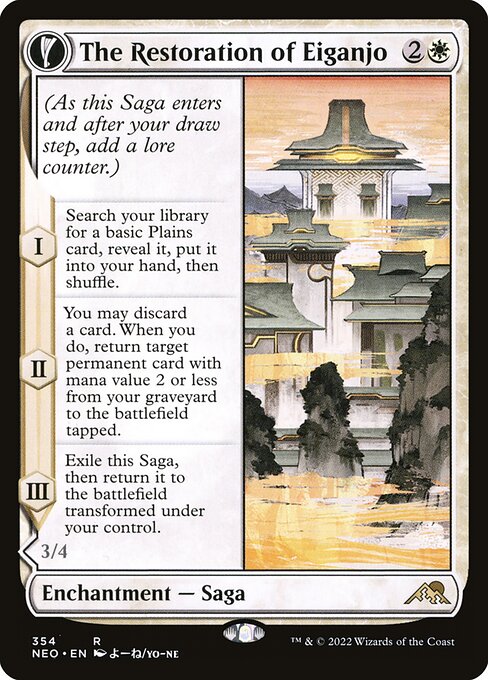

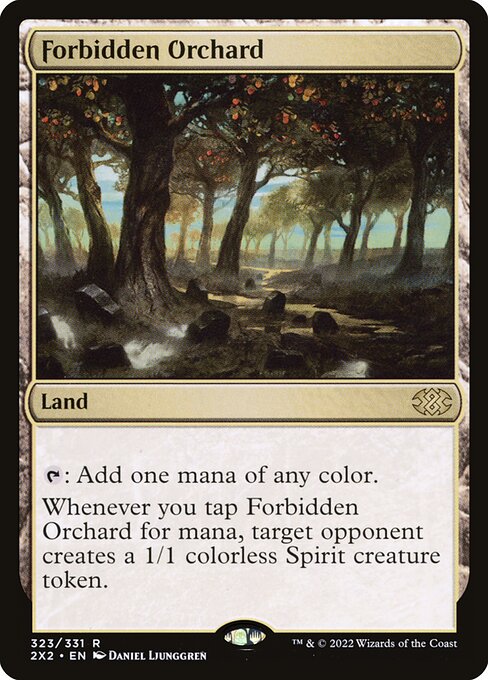

 4.85€
4.85€
